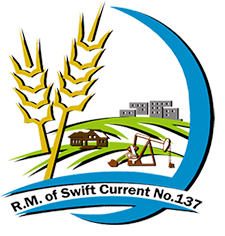Overview
The Rural Municipality of Swift Current No. 137, located in southwestern Saskatchewan, has a long and dynamic history tied to the development of agriculture and transportation in the region. Officially established on December 13, 1910, Swift Current has grown from a modest settlement area into a thriving agricultural and commercial hub, adapting to change while preserving its rural roots.
Indigenous History and Early Settlement
Long before European settlers arrived, the land that would become RM 137 was part of the traditional territory of Indigenous groups, including the Cree and Assiniboine peoples. These communities relied on the vast plains and water sources for hunting, fishing, and gathering, establishing a deep connection with the land.
In the late 1800s, settlers began to move into the area, spurred by the Dominion Lands Act, which offered homesteaders opportunities to farm and own land. The name “Swift Current” was adopted from the creek that runs through the region, an important water source for both Indigenous peoples and settlers. The establishment of the RM provided a governance structure that allowed settlers to collaborate on building roads, developing infrastructure, and creating services that would sustain the growing community.
Agricultural Foundations and Development
Agriculture quickly emerged as the backbone of the economy in Swift Current. Early homesteaders planted crops such as wheat, barley, and oats, benefiting from the rich prairie soil. The creek’s water source was crucial, supporting both crop and livestock farming. As the community grew, so did its agricultural diversity, with livestock farming becoming increasingly important alongside grain production.
The arrival of the Canadian Pacific Railway transformed the region. Swift Current became a critical transportation hub, allowing local farmers to move their goods efficiently to larger markets. The RM played an active role in developing and maintaining infrastructure, such as roads and bridges, to support this growth. Over time, programs promoting soil conservation, crop diversification, and the adoption of new technologies were introduced, helping to secure the agricultural sector’s long-term viability.
The Landscape and Swift Current Creek
The RM’s name is deeply connected to the creek that meanders through the area, providing a lifeline for the early inhabitants and settlers. The landscape of Swift Current is characterized by its open plains, rolling hills, and the presence of the creek, which has shaped the region’s agricultural practices. These natural features not only support farming but also add to the area’s appeal for outdoor enthusiasts.
The creek has become a focal point for recreational activities like fishing, canoeing, and hiking, attracting visitors and locals alike. The area’s natural beauty has also contributed to the development of agri-tourism, as people come to experience the rural lifestyle and scenic prairie landscapes.
Community Life and Growth
From its early days, RM 137 Swift Current has fostered a strong sense of community. Neighbors relied on one another through cooperative efforts, such as barn-raisings, community harvests, and social gatherings, creating a foundation of solidarity. Today, this sense of unity continues through local events such as fairs, festivals, and sports competitions, which bring residents together and celebrate the area’s rural heritage.
To support its residents, the RM has invested in essential services and facilities, including schools, healthcare centers, and recreational spaces. These investments ensure that residents have access to the resources they need while preserving the rural character and lifestyle that define Swift Current. The towns and hamlets within the RM serve as hubs for economic and social activity, supporting local businesses and fostering a sense of community.
Modernization and Diversification
As agriculture has modernized, so has RM 137 Swift Current. The introduction of advanced technology and the expansion of farms have led to increased efficiency and productivity. The RM has supported these changes by upgrading infrastructure, ensuring that farmers have access to the roads, utilities, and services they need for their operations.
In addition to traditional agriculture, Swift Current has embraced diversification strategies to expand its economy. Renewable energy projects, including solar and wind farms, are being explored, and the RM is promoting agri-tourism as a way to showcase its agricultural heritage and natural beauty. These initiatives aim to create a more dynamic and sustainable economy for the region.
The RM has also participated in digital transformation efforts, including the OurSask.info initiative, which enhances communication and transparency with residents. This engagement ensures that the community remains informed and connected, allowing for effective governance and planning.
Conclusion
The history of RM 137 Swift Current is one of growth, resilience, and adaptation. From its origins as a small settlement area centered around a vital creek to its current status as a thriving agricultural and economic hub, Swift Current has evolved while maintaining its connection to the land and its community spirit. The RM continues to support its residents, embrace new opportunities, and ensure a sustainable future, solidifying its role as an integral part of Saskatchewan’s rural landscape
